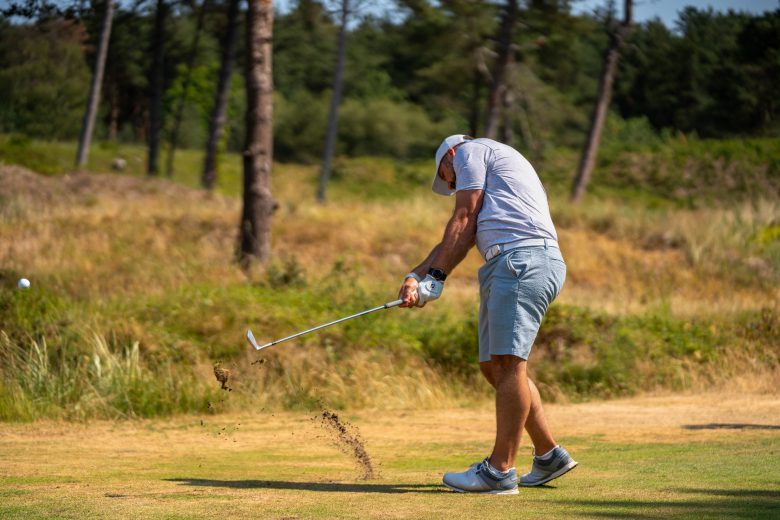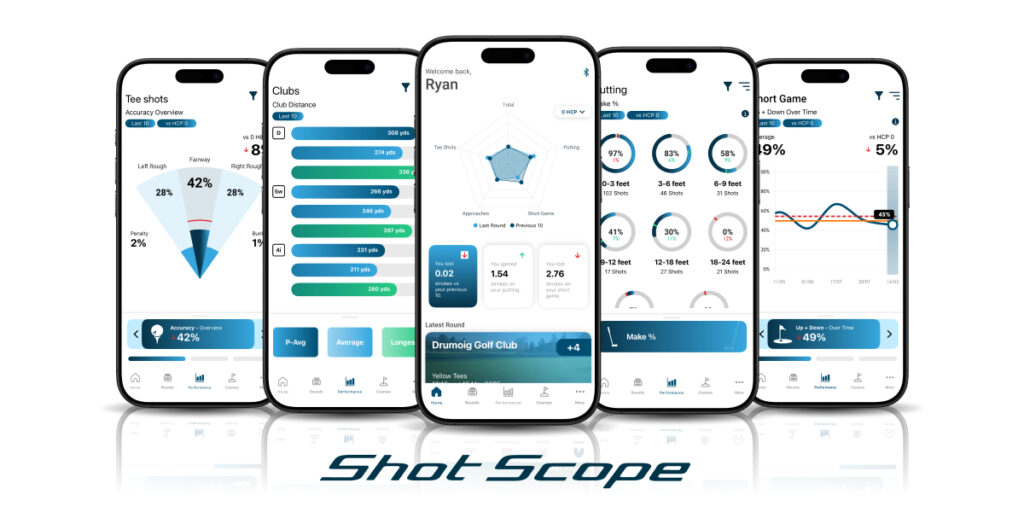For the third edition of the Law of Averages blog series, we take a closer look at the stats of a 15hcp golfer offering insight into their game and some comparisons to lower players.
Previously we have looked at the stats of a 20hcp golfer and a 25 handicapper. We will work our way down the handicap benchmarks until we get to scratch.
Without further ado, here are some benchmark stats for a 15hcp golfer:
| Avg. Par 3 Score | Avg. Par 4 Score | Avg. Par 5 Score | FIR% | GIR% | Up and Down % | Three Putt % | Make % from 0-6ft |
| 3.83 | 5.05 | 5.91 | 47% | 23% | 35% | 10% | 85% |
Longer hitting = lower scores
As we always do, firstly we focus on length off the tee. Why? Because as we have learned in previous blogs, length plays a big factor in scoring.
A 25 handicapper has a Performance-Average driver distance of 238 yards. For those that are not aware of Performance-Average, it is the distance you can expect to hit a club typically as it excludes abnormal shots – both exceptionally long and exceptionally short.
P-Avg. gives players a more realistic number to play to. When we compare the driving distance of a 15hcp golfer to that of both a 10hcp and 20hcp we see how distance contributes to lower scores, and in turn, lower handicaps.
The 15hcp hits the ball 34 yards longer than a 20hcp and 22 yards shorter than that of a 10hcp. Now there are other areas of the game that make up the difference in scoring averages and handicap but we can see a clear trend.
Longer hitting = lower scores (usually!)
‘Better players hit more fairways’ – think again!
Hitting fairways is not an issue, there is a common misconception amongst amateur golfers that ‘better players’ hit more fairways but the difference is fairly small. When compared to a scratch golfer, the difference is 3% – a lot less than you may think!
One of the larger differences that begins to appear is Greens in Regulation (GIR). When we look at the different handicap brackets, we see a gradual increase in the number of greens hit. Why might that be?
A combination of things contributes to this difference, much like the game of golf, it is a collection of finer details that create the bigger picture.
Lower handicap players are typically hitting it further, which allows them to hit shorter clubs into green, which gives them a greater chance of hitting the green, which means they don’t have to attempt to make an up and down, which ultimately saves them strokes (and breathe!).
A longer sentence but that is simply to emphasise the knock-on effect we see in golf data. It makes sense, think of your own game, would you rather hit a 5 iron into a green or a 7 iron?
As distance to the green goes down, the likelihood of hitting the green goes up.
The requirement to hit two long shots on a Par 5 is often the downfall of mid-to-high handicappers as it requires a good tee shot and an equally good second shot. When the second shot is mishit or misplaced, scoring rapidly increases.
Whilst all shots count the same for the scorecard, you could argue that the first two on a Par 5 are more important. If you hit it out of bounds off the tee, you have your back against the wall and still have to navigate over 500 yards of a hole.
Similarly, with a wood in hand for the second, it is easy to spray the ball and find yourself lost or in trouble and having to chip out.
As previously mentioned, all shots count the same, but some seem to carry an extra significance psychologically at times – just like a dreaded three-putt!
Speaking of three-putts, how often does a 15 handicapper three whack?
A 15 handicapper, on any given green, will typically three-putt 10% of the time, or, roughly every 10.4 holes. So there is a good chance that on any round there could be two three-putts if not one.
If you want to reduce this number, work on distance control.
Almost every amateur golfer has a tendency to miss putts short and 100% of short putts don’t go in. Yes, we have used that line before but it is worth reinforcing!
If you have a long putt, getting it inside 6ft is a good start. From inside 6ft, the 15hcp golfer has a make percentage of 85%.
Move 3ft closer and make percentage goes up by nearly 10% to 94%! Work on lag putting and say goodbye to three-putts.
From long distance, inside 6ft is good and inside 3ft is incredible.
We looked at how amateurs compare to the PGA Tour’s best putter, at the time of publishing, Maverick McNealy, and the stats are jaw-dropping! Find out more here.
If you want to save strokes before you tee off check this out.
Utilise full course aerial maps to preview a course prior to playing. Or, for our performance trackers, take it a step further and create your own unique data-driven strategy on MyStrategy.
Learn your game with our performance tracking products, and take your golf to the next level with Shot Scope.
Cover Image: Cover Image Credit: Daxiao Productions / Shutterstock








